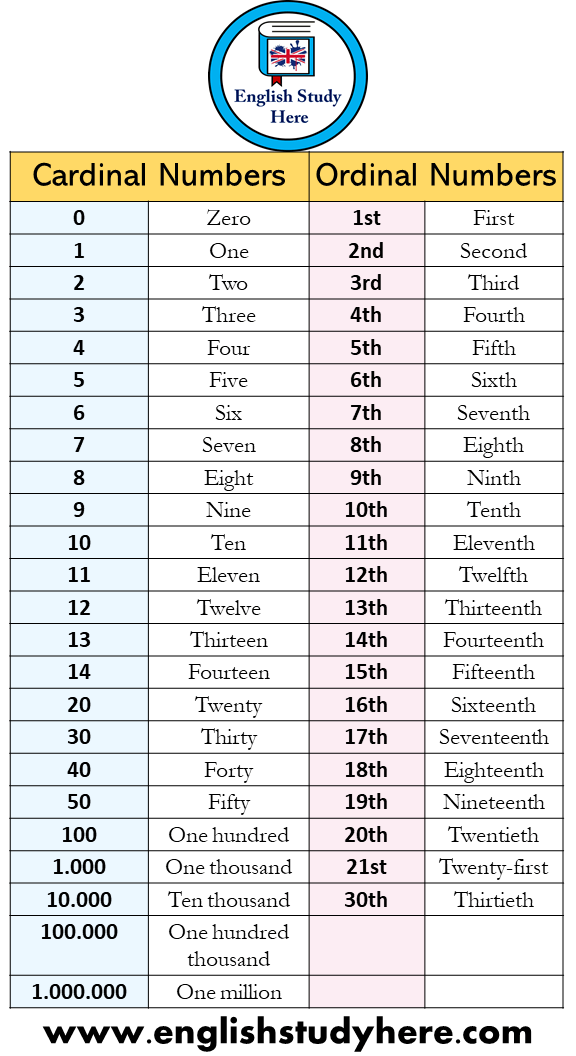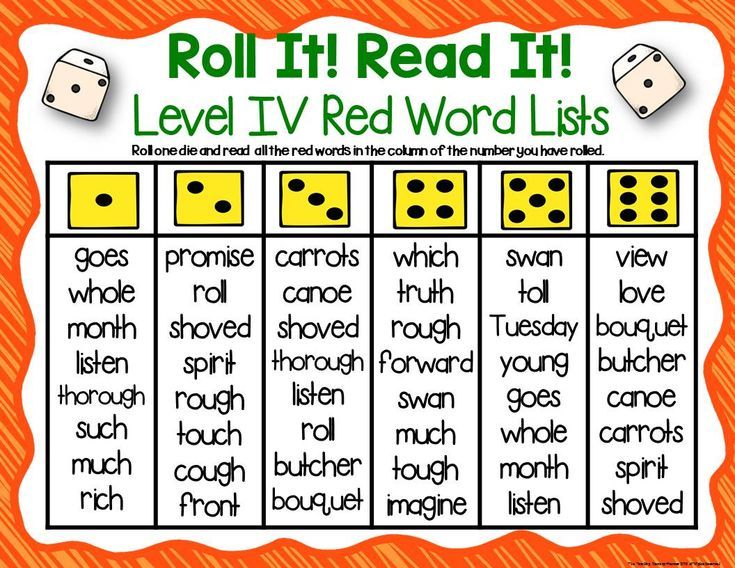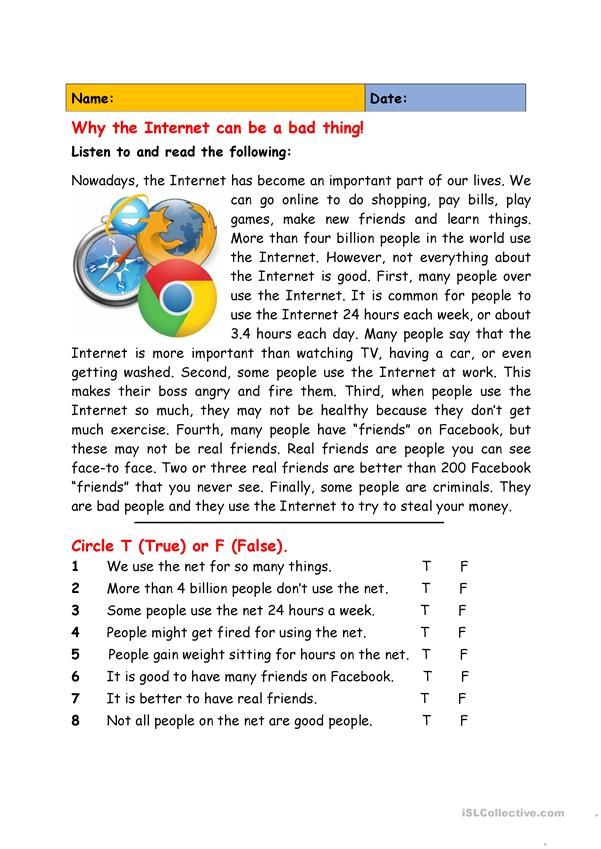What are cardinal numbers
What are Cardinal Numbers? Definition, List, Examples, Facts
What Are Cardinal Numbers?
Cardinal numbers are numbers that are used for counting real objects or counting things. They are also known as “counting numbers” or “cardinals.” We commonly use cardinal numbers or cardinals to answer the question starting with “How many?”
So, how to find the cardinal numbers around us? Let’s see an example.
Example:
How many dogs are in the given picture?
To know the total number of dogs, we need to count the dogs given in the image.
There are 8 dogs in all. Here, 8 is the cardinal number.
Recommended Worksheets:
Cardinal Numbers: Definition
The numbers that we use for counting are called cardinal numbers. They tell us the quantity of objects.
Cardinal Numbers Examples: 2 bananas, 5 suitcases, 100 points, a million dollars, etc.
Cardinal numbers do not include fractions or decimals. Cardinal numbers are natural numbers or positive integers. The smallest cardinal number is 1.
Examples of cardinal numbers are 1, 2, 3, 4, 5, 6, 7, 8, 9, 10, 11, 12, 13, 14, 15, 16, 17, 18, 19, 20, 21, and so on.
The smallest cardinal number is 1.
If we count a bag filled with a million dollars, we get a cardinal number: “one million!”
Example:
Recommended Games:
Cardinal Numbers in Words
We can also write cardinal numbers in words. For the first 10 numbers, we can write the cardinal numbers as:
- 1 – One
- 2 – Two
- 3 – Three
- 4 – Four
- 5 – Five
- 6 – Six
- 7 – Seven
- 8 – Eight
- 9 – Nine
- 10 – Ten
List of Cardinal Numbers
Here’s a list of cardinal numbers up to 100, in figures and in words:
Cardinal Numbers as Multiples of 100:
We can count further and list a few larger cardinal numbers as well:
What Is Cardinality?
The cardinality of a group or a set represents how many elements or numbers are present in a group or in a set.
For example, if a pencil set has 10 pencils in it, then the cardinality of pencils is 10.
Cardinal Number of a Set
The number of elements in a set is known as the cardinal number of that set. If A is a finite set and it has N elements, then the cardinal number of set A is given by n(A) $=$ N.
Note: The cardinal number of an empty set is always zero.
For example, what is the cardinal number of a set if the set is defined as A $=$ {2, 5, 7, 9, 11, 15, 19, 22, 24}?
The cardinal number of set A is 9. Hence, n(A) $=$ 9
Cardinal Numbers vs. Ordinal Numbers
As we discussed, the cardinal numbers are used for counting. They include all the natural numbers. However, an ordinal number is a number that is used to represent the position or order of an object. Examples:
1st rank, 2nd in a queue, 3rd row, tenth floor, etc.
Ordinal numbers are used for ranking or ordering.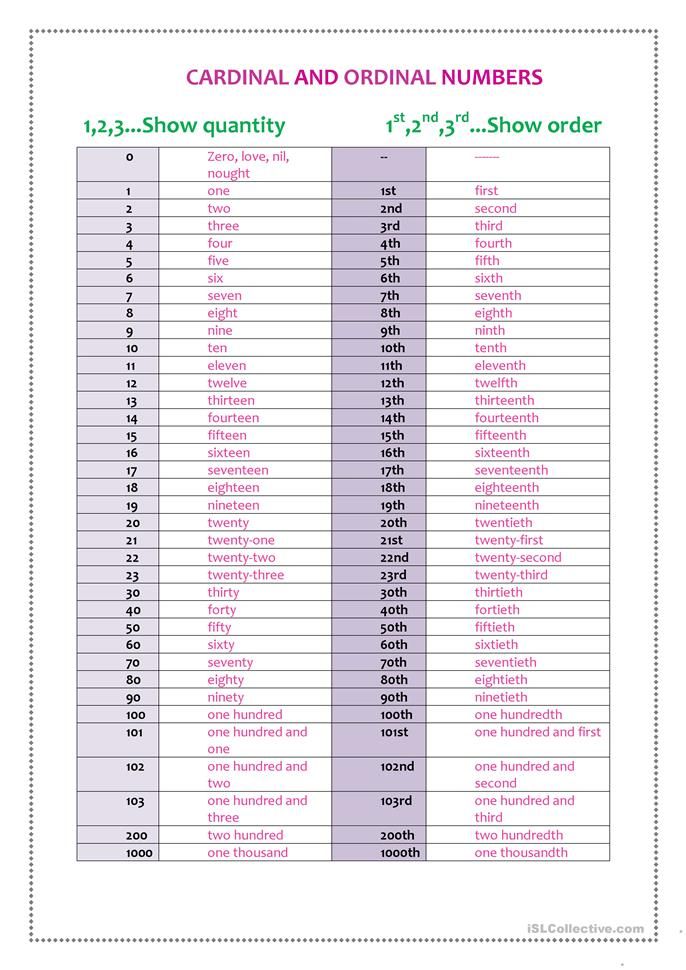
Here’s an example that explain the difference between cardinal and ordinal numbers:
In the image given above, we can see a group of 8 children on the picnic spot. Here, 8 represents the cardinal number.
In the above image, we can see the position of the kids in a running event. Here, first, second, third, fourth, fifth are ordinal numbers.
Difference between Cardinal Numbers and Ordinal Numbers
Nominal Numbers
Nominal numbers, as the name suggests, are used to name an object or a thing in a set of groups. They help us in the identification of objects. It is not used to represent the quantity or the position of an object.
For example:
- Social security number
- Zip code number
- Cell phone number
In the image given below, the numbers 22, 18 are nominal numbers since they are used on the jerseys to represent players or to identify players.
Conclusion
In this article, we learnt about the Cardinal Numbers.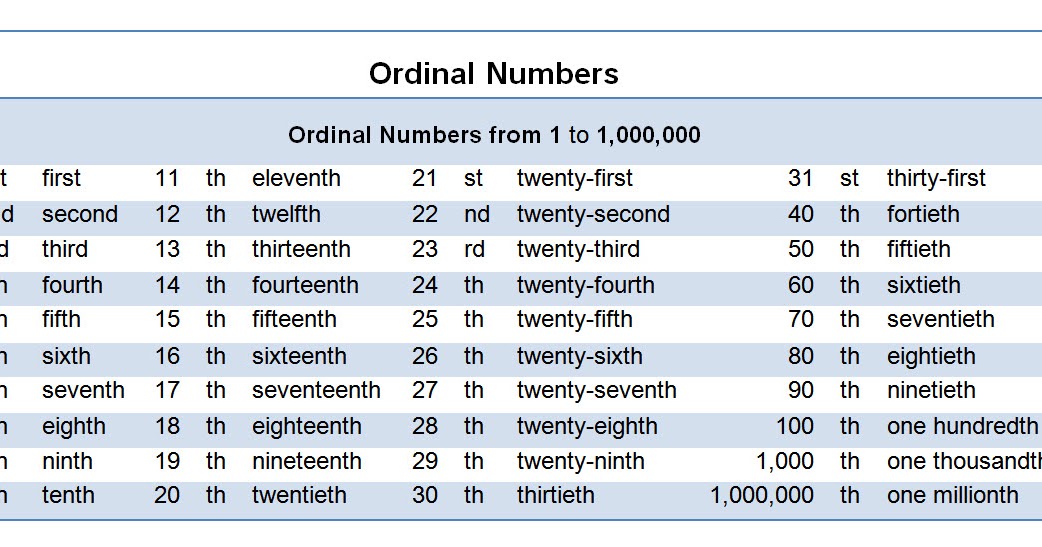 Cardinal Numbers are the numbers used for counting numbers. To read more such informative articles on other concepts, do visit SplashLearn. We, at SplashLearn, are on a mission to make learning fun and interactive for all students.
Cardinal Numbers are the numbers used for counting numbers. To read more such informative articles on other concepts, do visit SplashLearn. We, at SplashLearn, are on a mission to make learning fun and interactive for all students.
Solved Examples
1. Kathy has a list of numbers as shown: 10, 9, 7th, 22, Third, Five, 21st. Identify the cardinal numbers.
Solution: The cardinal numbers are used for counting. The cardinal numbers are 10, 9, 22 and Five.
2. Help Mark calculate the number of consonants in “INDEPENDENCE.” Also identify the number of alphabets used to form this word.
Solution: The consonants are alphabets other than vowels. The vowels are a, e, i, o and u. The number of consonants INDEPENDENCE are 7. The number of alphabets in the word INDEPENDENCE are 12.
3. Write the cardinality of the flowers in the vase.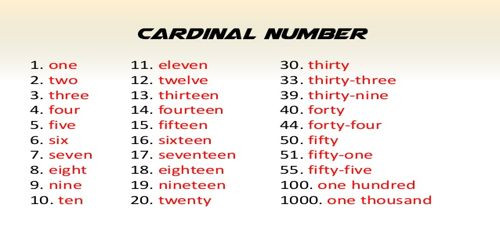
Solution: There are 5 flowers in the vase. So, the cardinality is 5.
4. What is the position of the strawberry from the left?
Solution: The strawberry is at the second position from the left. Here, second is the ordinal number.
5. How many kites are there in all? What is a cardinal number here?
Solution: On counting, we get:
There are 8 kites. 8 is the cardinal number since we used it for counting.
Practice Problems
1
How many two-digit numbers are there?
89
90
91
92
Correct answer is: 90
The smallest two-digit number is 10 and the greatest two-digit number is 99.
From 1 to 99, there are 99 numbers. Out of them 9 numbers (1 to 9) are one-digit numbers.
So, we will subtract 9 from 99 to find the two-digit numbers.
Number of two-digit numbers $= 99 – 9 = 90$
2
The cardinality of the set A $= {12, 18, 23, 65}$ is
4
10
18
Cannot be defined.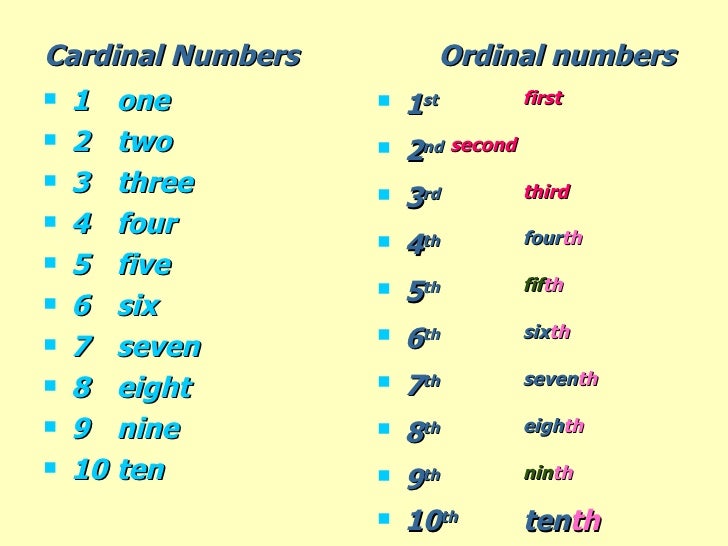
Correct answer is: 4
Since the number of elements in the set is 4, the cardinality of the set is 4.
3
Which of the following is not a cardinal number?
23
Sixty-one
4th
77
Correct answer is: 4th
4th is not a cardinal number as it tells us about the position of something.
4
For which of the following are cardinal numbers used?
To find the number of objects
To identify the rank or order of something
To identify objects
All of these
Correct answer is: To find the number of objects
We use cardinal or natural numbers for finding the number of objects.
5
76 is a $\underline{}$ number.
Ordinal
Cardinal
Nominal
None of these
Correct answer is: Cardinal
76 is a natural number and hence, it is cardinal.
Frequently Asked Questions
Which is the smallest cardinal number?
The smallest cardinal number is 1.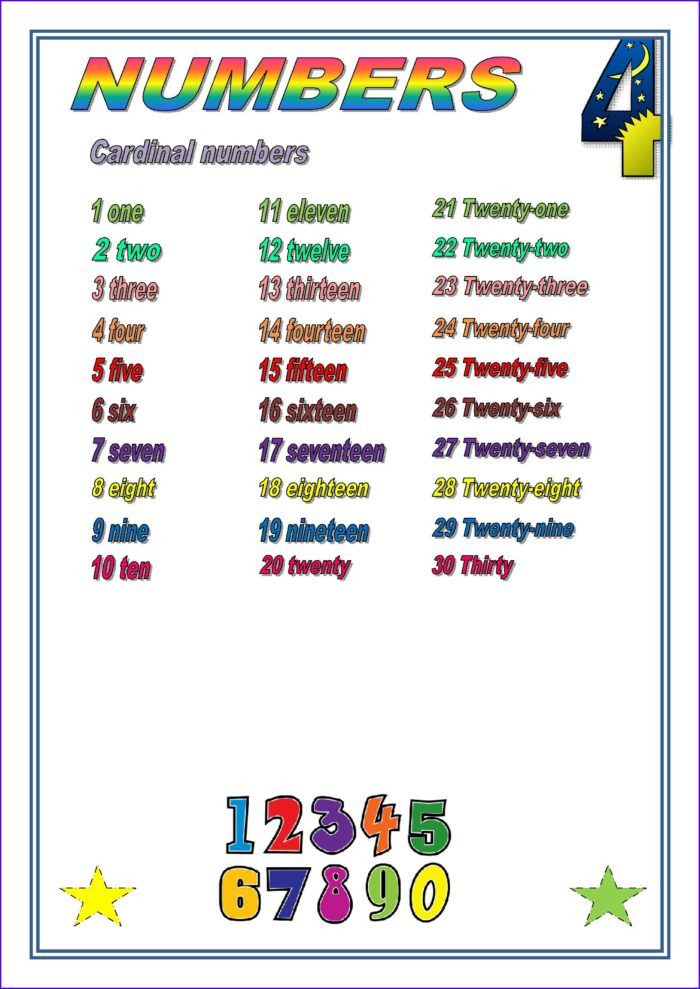
Can cardinal numbers be negative?
No, cardinal numbers cannot be negative. They are positive integers or natural numbers, as we count the number of items starting from number 1, and then it goes up to infinity.
Is 0 a cardinal number?
No, we can not count 0 things.
Which is the biggest cardinal number?
The biggest cardinal number is infinity.
Can we do operations with the cardinal numbers?
Yes, we can do operations with the cardinal numbers. We can add, subtract, multiply, and divide the cardinal numbers.
Are all whole numbers cardinals?
All whole numbers are not cardinal numbers. 0 is a whole number but not a cardinal number as we can never say that the number of objects is 0.
What is the Cardinal Counting Principle?
When you count a number of objects in a group, the total number of items is the last word said while counting.
- Number
- First
- Ordinal Numbers
Cardinal Numbers - Meaning, Examples, Sets
Cardinal numbers are numbers that are used for counting. They are also known as natural numbers or cardinals. A set of cardinal numbers starts from 1 and it goes on up to infinity. We use cardinal numbers to answer the question "how many?". For example, how many students are going to the school picnic? The answer could be any number like 20, 23, 30, etc. So, all these numbers come in the category of cardinal numbers. In this article, we will explore the world of cardinal numbers and understand the difference between cardinal and ordinal numbers.
| 1. | What are Cardinal Numbers? |
| 2. | Difference Between Cardinal and Ordinal Numbers |
| 3. | List of Cardinal Numbers from 1 to 100 |
| 4. | Cardinal Numbers of a Set |
5. |
FAQs on Cardinal Numbers |
What are Cardinal Numbers?
A cardinal number describes or represents how many of something are present. Example 2 apples, 5 flowers, etc. It quantifies an object. It does not have values as fractions or decimals. Cardinal numbers are counting numbers, they help to count the number of items. Let's have a look at cardinal numbers examples. Ana wants to count the number of people standing in a queue at a billing counter. Can you help her? Ana started to count using Natural numbers.
Ana counted 1, 2, 3, 4, and 5. There are 5 people standing in a queue at the billing counter. Counting numbers are cardinal numbers! Now, Let's consider another example, Noah kept eight apples in a basket. The number eight denotes how many apples are there in the basket, irrespective of their order.
Examples of cardinal numbers are 1, 2, 3, 4, 5, 6, 7, 8, 9, 10, 11, 12, 13, 14, 15, 16, 17, 18, 19, 20, 21, and so on.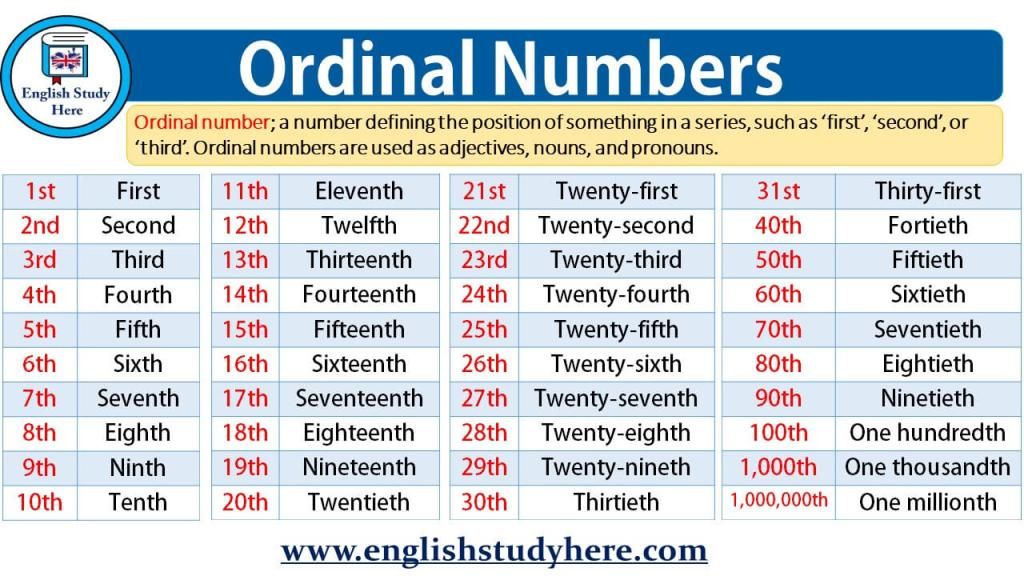 The smallest cardinal number is 1 as 0 is not used for counting, so it is not a cardinal number.
The smallest cardinal number is 1 as 0 is not used for counting, so it is not a cardinal number.
Difference Between Cardinal and Ordinal Numbers
All the natural numbers are also referred to as cardinal numbers. Cardinal numbers are used for counting. While an ordinal number is a number that denotes the position or place of an object. Example: 1st, 2nd, 3rd, 4th, 5th, etc. Ordinal numbers are used for ranking. Here is an example that explains cardinal and ordinal numbers:
In the above image, we can see a team of 4 workers on the construction site. This is an example of cardinal numbers.
In the above image, we can see the position of the runners in the running event. First, second, third, and so on. This is an example of ordinal numbers. Let's discuss ordinal and cardinal number differences in the table below:
| Cardinal Numbers | Ordinal Numbers |
|---|---|
They are counting numbers that represent quantity.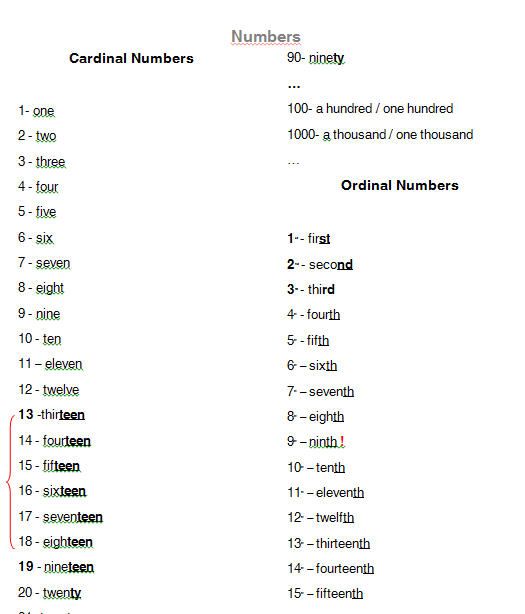 |
They are based on the rank or position of an object in a given list or order. |
| Cardinal numbers give us the answer of 'how many?'. | Ordinal numbers give us the answer of 'where'. For instance, where does the object lies in the list? |
| Examples are 1, 2, 3, 4, 5, 10, etc. | Examples are 1st, 2nd, 3rd, 4th, 5th, 10th, etc. |
List of Cardinal Numbers from 1 to 100
Given below are the basic and most important cardinal numbers, which form the base for other counting numbers.
| 1 - One | 6 - Six |
| 2 - Two | 7 - Seven |
| 3 - Three | 8 - Eight |
| 4 - Four | 9 - Nine |
| 5 - Five | 10 - Ten |
| 10 - Ten | 60 - Sixty |
| 20 - Twenty | 70 - Seventy |
| 30 - Thirty | 80 - Eighty |
| 40 - Forty | 90 - Ninety |
| 50 - Fifty | 100 - Hundred |
Given below is the list of all cardinal numbers from 1 to 100. It will also help you to see how we write cardinal numbers in words like 21- twenty-one.
It will also help you to see how we write cardinal numbers in words like 21- twenty-one.
Cardinal Numbers of a Set
In the case of a set, the cardinal number is the total number of elements present in it. In other words, the number of distinct elements present in a set is the cardinal number of the set. The cardinal number of a set A is represented as n(A). For example, the cardinal number of set W = {1, 3, 5, 7, 9} is n(W)=5, as there are 5 elements in it.
Think Tank:
- Maria wrote January 1, 2020, as today’s date in her notebook. Does the number 1 in the date, represent a cardinal number?
- There are _______ people in the line ahead of me. I am the 7th person in the line.
Important Notes:
- Cardinal numbers help us to count the number of things or people in or around a place or a group.
- The collection of all the ordinal numbers can be denoted by the cardinal.
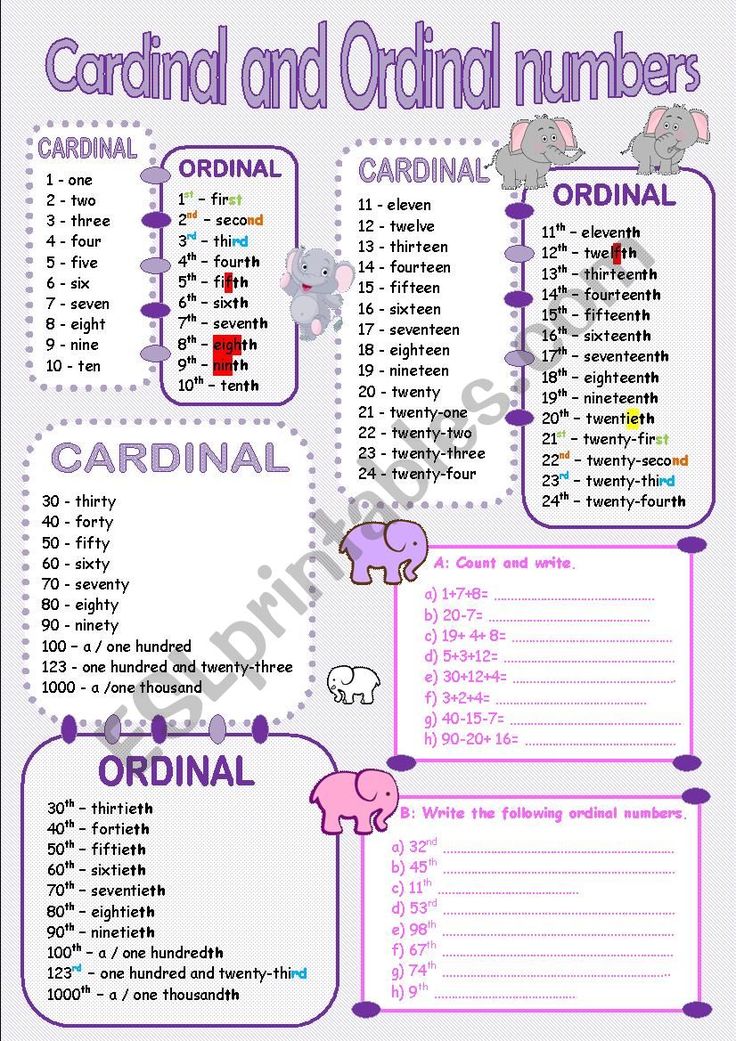
- Cardinal numbers can be written as words such as one, two, three, etc.
- Cardinal numbers tell how many items, whereas ordinal numbers show position or ranking.
Related Articles
Check out these interesting articles to know more about cardinal numbers and its related articles.
- Ordinal Numbers
- Whole Numbers
- Natural Numbers
- Difference Between Natural and Whole Numbers
Cardinal Numbers Examples
-
Example 1: Kate has a list of numbers as shown - 7, 8th, 10, Two, Fourth, 2nd. Identify the cardinal numbers.
Solution:
7, 10 and two help us in counting, whereas 8th, fourth and 2nd helps us in identifying the position. Thus, 7, 10, and two are cardinal numbers.
-
Example 2: Help Ryan, to calculate the number of vowels in "NUMBERS".
 Also, identify the number of alphabets used to form this word.
Also, identify the number of alphabets used to form this word.Solution:
(i) We know that a, e, i, o, and u are the vowels and in the given word u and e are used. Therefore, 2 vowels are used to form this number (2 is the required cardinal number).
(ii) We start counting from N to S, we see that "Numbers" has 7 alphabets in all. Therefore, a total of 7 alphabets are required to form the given word and here 7 is a cardinal number.
go to slidego to slide
Breakdown tough concepts through simple visuals.
Math will no longer be a tough subject, especially when you understand the concepts through visualizations with Cuemath.
Book a Free Trial Class
Practice Questions on Cardinal Numbers
go to slidego to slidego to slide
FAQs on Cardinal Numbers
What is a Cardinal Number Example?
Cardinal numbers are used for counting. Some examples of cardinal numbers are 1, 2, 3, 4, 5, 10, 15, 20, 30, 40, 50, 100, etc.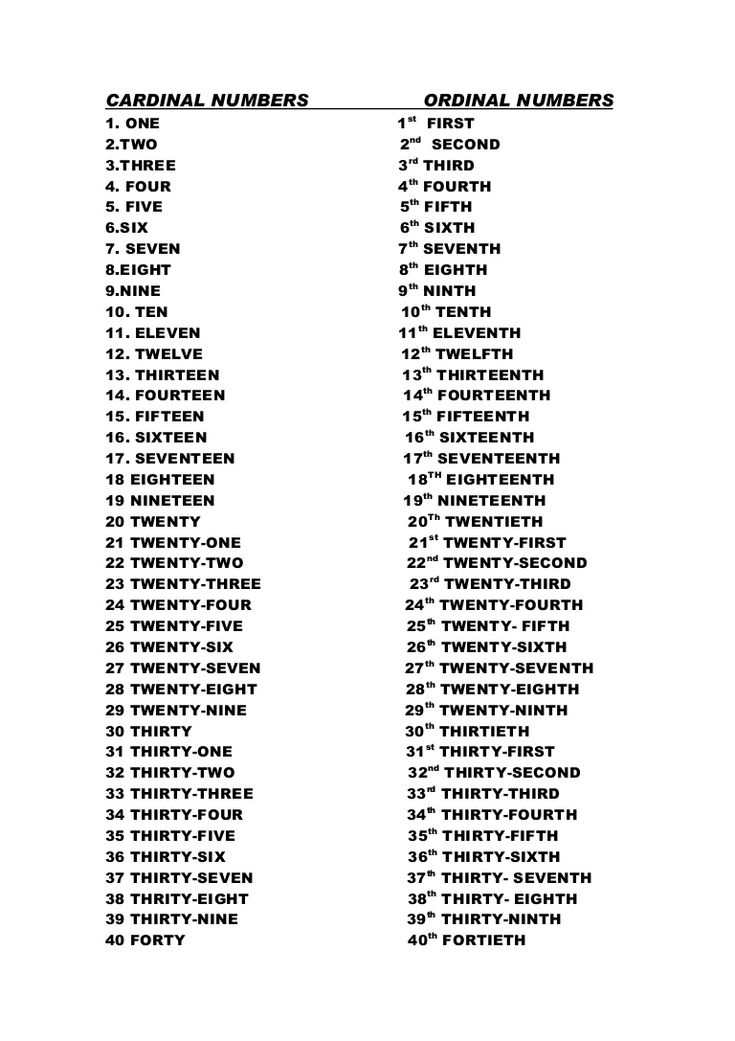 In our daily life, we use cardinal numbers a lot. Even a small child uses this mathematical concept without knowing the term for it. They do count how many toys they have, how many people are there around them, how many friends they have, how many subjects do they study at school, etc.
In our daily life, we use cardinal numbers a lot. Even a small child uses this mathematical concept without knowing the term for it. They do count how many toys they have, how many people are there around them, how many friends they have, how many subjects do they study at school, etc.
What is the Smallest Cardinal Number?
The smallest cardinal number is 1 (one) as whenever we count, we always start from 1.
How do you Find Cardinal Numbers?
Cardinal numbers can be found by counting. We start by 1 and then go on as per the number sequence.
How is Cardinal Number Different from the Ordinal Number?
Cardinal numbers are numbers that represent the number of items(quantity) while ordinal numbers represent the rank or position of an item in the given list.
What is a Cardinal Number in Sets?
In set A, if there are a total of 25 elements then 25 is the cardinal number of set A represented by n(A).
Can Cardinal Numbers Negative?
No, cardinal numbers cannot be negative.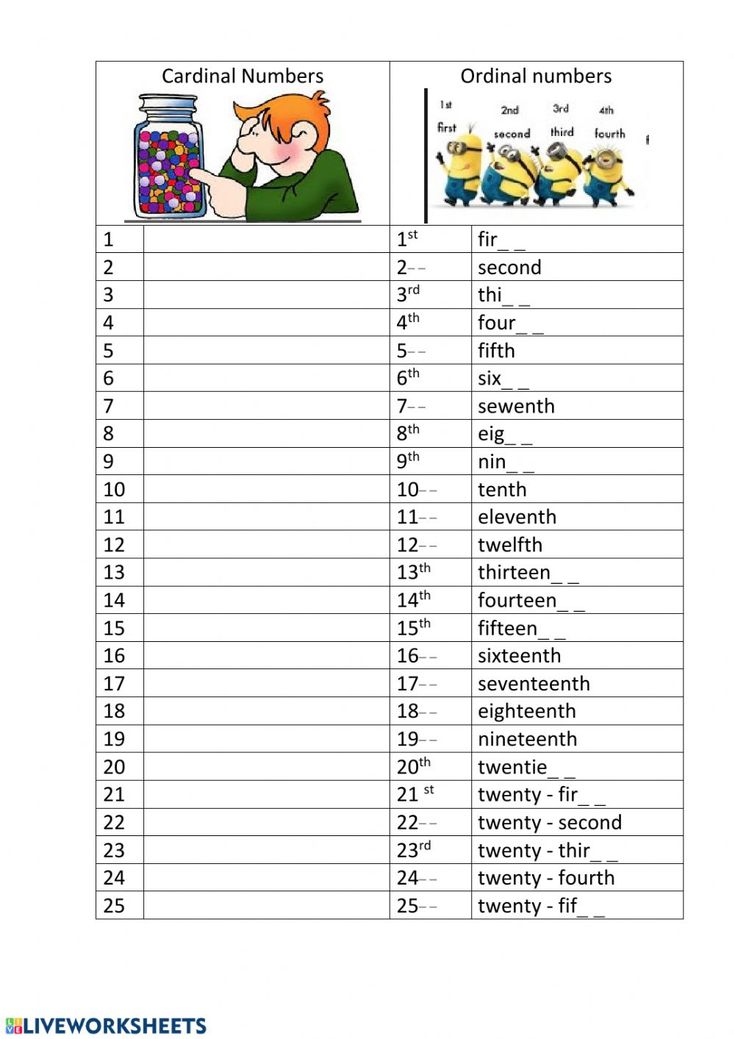 They are positive integers or natural numbers, as we always count the number of items starting from number 1, and then it goes up to infinity.
They are positive integers or natural numbers, as we always count the number of items starting from number 1, and then it goes up to infinity.
Is Zero a Cardinal Number?
No, 0 is not a cardinal number as cardinal numbers represent quantity, and 0 means nothing or no quantity.
What is the Biggest Cardinal Number?
There are infinite natural numbers. Therefore, there are as many cardinal numbers as natural numbers. There can be no generalization of the biggest natural number and so does for the biggest cardinal number.
Cardinal numbers: digits, spelling. Numeral POL
- Digits
- Spelling of cardinal numbers
- Soft sign in numerals
- Numeral LOL
- Syntactic role
Cardinal numbers are numerals denoting numbers and amounts of objects. Cardinal numbers answer the question how much? nine0011 :
one, seven, one hundred and five .
Cardinal numbers change according to cases, but do not change according to numbers and genders. The exception is the numerals one, two, both, one and a half , which change by childbirth:
The exception is the numerals one, two, both, one and a half , which change by childbirth:
One - one,
Two - two,
Both - both,
- one and a half 11;
and numerals one, thousand, million, billion , which change by numbers:
one - one,
thousand - thousand,
million - millions,
billion - billions .
Cardinal numbers are characterized by specific compatibility with nouns:
- After the numeral one (one, one) nouns stand in the nominative singular :
one friend one cup , one case .
The numeral one is consistent with nouns in all cases:one friend, one friend, one friend, one friend, about one friend .
- After the numerals two, three, four nouns are in the genitive singular :
two friends , three bananas , four birches .
After all other numerals, nouns stand in the genitive plural :
seven friends , forty bananas , one hundred birches .
In all cases, except for the nominative, the numerals will agree with the nouns:no two friends, approached two friends, proud of two friends, talked about two friends .
nine0004
Digits
Cardinal numbers are divided into digits:
- Integers (denoting an integer):
one, twenty-five, one hundred .
- Fractional (denoting a fractional number):
three fifths, one eighth .
Fractional numbers consist of two parts: the first part is the numerator of the fraction is a cardinal number in the nominative case, the second part is the denominator of is the ordinal number in the genitive plural:
If the numerator is 1 or 2 , then the feminine form is used:one tenth, two sevenths .
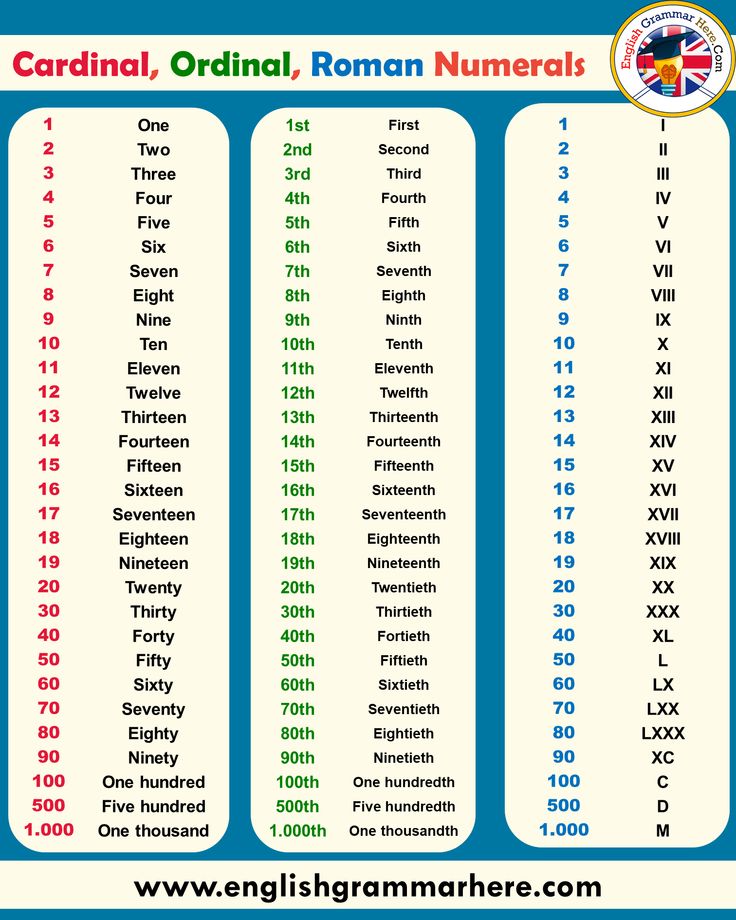
Fractional numbers are written separately.
In colloquial speech, some fractional numbers have specific names:
one second - half , one third - third , one fourth - quarter .
Nouns after fractional numbers are always put in the genitive singular:half an apple, three fourths of the area, a quarter of a kilogram .
The word and a half also belongs to fractional numbers, which has only two forms:M. and Wed. genus J. Rod I., V. One and a half FILE R., D., T., P. 9011 9019 - Collective (total 11 pieces):
two, three, four, five, six, seven, eight, nine, ten ;
both (both, both), both (both).
Collective numerals denote the number of persons or objects as a single group, something united and inseparable: nine0016 two sisters, four friends .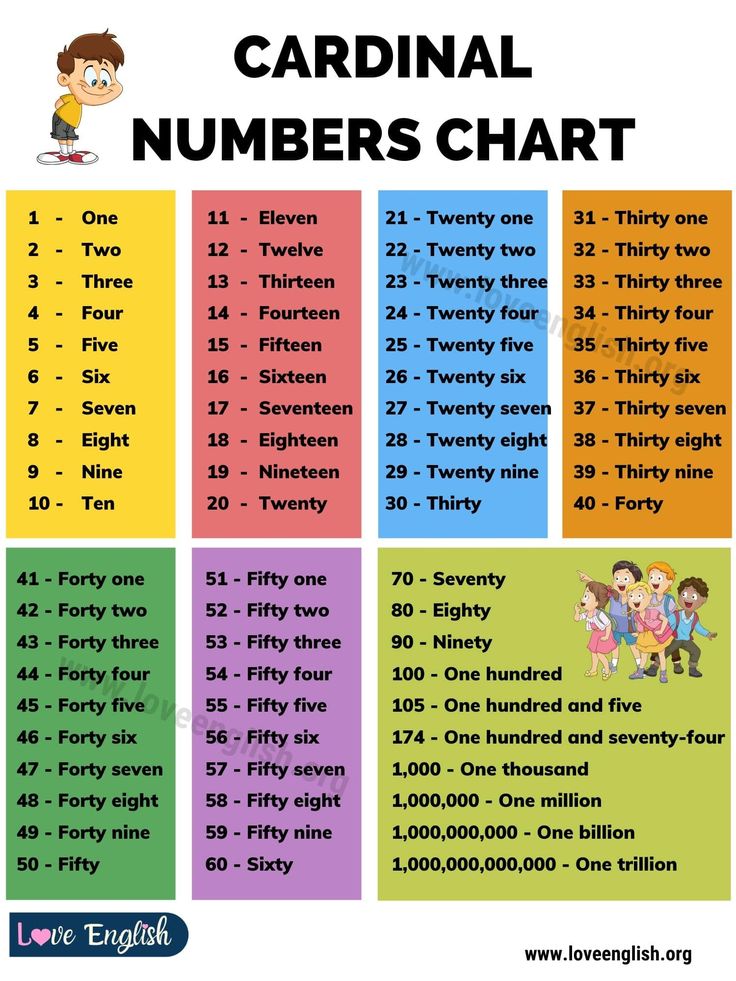
Collective numbers combined:
- With nouns that are used only in the plural:
two points, three sleds .
- With masculine nouns denoting people and baby animals:
three friends, five kittens .
Regular quantitative nouns can also be combined with these nouns: nine0016 three friends - three friends, five kittens - five kittens . - With nouns denoting paired items:
two socks, three boots .
- Only the numeral and both can be combined with feminine nouns:
both sisters, both legs .
- With personal pronouns:
there will be six of us .
two boys , three kittens , five boys .
After the collective numbers both, both , standing in the nominative case, the noun is put in the genitive singular :both boys , both girls .
The numerals both, both are the only collectives that combine with any nouns denoting countable objects:
both windows, both cases, both doors, both legs .
- With nouns that are used only in the plural:
Spelling of cardinal numbers
Cardinal numbers ending in -TEN, -STA, -COT , written together:
seventy, four hundred, nine hundred .
The numeral eleven is written with НН from the expression one-on-twenty
, where - twenty means ten.
Simple numerals from 5 to 10 and complex numerals, which end at - (from 11 to 20 and 30 ), are written with a soft sign ( b ) at the end:
five, thirty .
When declining these numerals, only their endings change:
five - five, thirty - thirty .
complex numerals that end at -thousand ( 50 -80 ) and at -hundred ( 500 -900 ), are written with a soft sign ( b ) in the middle:
seventy, seventy, seventy, seventy, seven hundred .
Declension changes both parts of these numbers: 90
Soft sign in numerals
| in the middle | fifty, sixty, seventy, eighty, five hundred, six hundred, seven hundred, eight hundred, nine hundred |
|---|---|
| at the end thirteen, fourteen, fifteen, sixteen, seventeen, eighteen, nineteen, twenty, thirty |
Soft sign ь is not written in the middle of the following numbers:
fifteen, sixteen, seventeen, eighteen, nineteen.
Numeral
FLOORInstead of the word half its abbreviated version is often used - floor . The numeral floor with other words can be written together, separately or with a hyphen.
| one piece | As part of compound words, the second part of which begins with a consonant letter.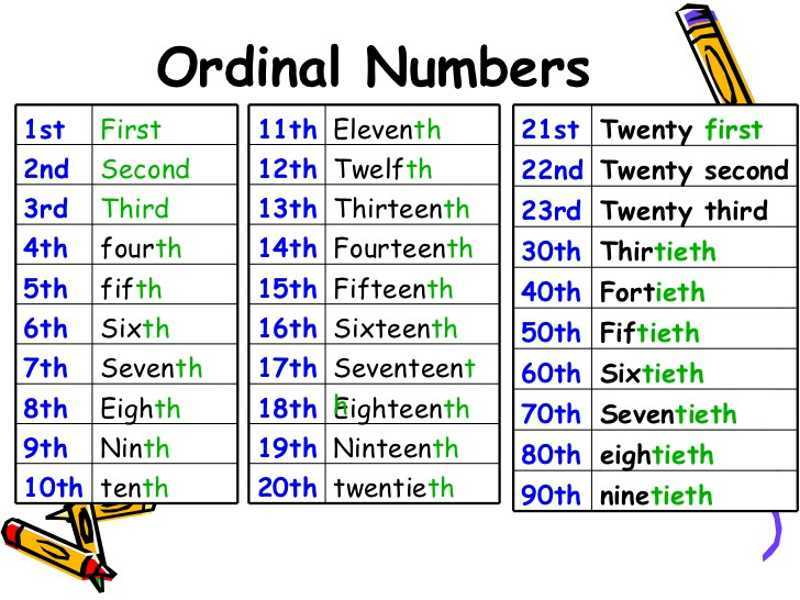 | half past two half an hour half a glass |
|---|---|---|
| As part of adverbs. | half voice half turn half voice | |
| hyphenated | Before vowels. | half an apple half a watermelon |
| Before a consonant L . | half a lemon half a liter | |
| Before proper names. | half of Moscow half of Italy | |
| separately | If gender has an independent meaning and there is an agreed definition between it and the noun. | half a coffee cup half past three in the night |
Syntactic role
In sentences, cardinal numbers can be any part of the sentence. Cardinal numbers with nouns dependent on them are one member of the sentence. For example:
Ten is divisible by two.
Three kittens were playing on the lawn near the house.
After an unexpected defeat, there were nine of us left.
I took out five coins from my pocket.
Extra classes were supposed to start at five o'clock.
Cardinal and Ordinal Numbers in English
We will help you to speak English without hesitation
Start learning
On average, each of us uses from 20 to 40 numerals during the day. Therefore, it is worth paying special attention to the numerals in English: without them, how without hands - neither order a pizza, nor dictate a phone, nor find out what year it is.
Ordinal numbers
Numerals in English, as well as in Russian, are of 2 types: quantitative and ordinal. On this, perhaps, the similarity between English and Russian numerals ends.
Ordinal numbers - answer the question " which is ".
Most ordinal numbers are formed with the ending th .
Ordinal numbers are most often attached to a noun, so they are preceded by the definite article the:
- The forty-six th president of the United States. Forty-sixth President of the United States.
- November is the eleven th month. November is the eleventh month. nine0004
The formation of numerals in English has a clear algorithm. So, ordinal numbers are formed by adding th to cardinal numbers. But there are exceptions: first, second, third.
In compound ordinal numbers, only the last component is in ordinal form: twenty-sixth, seventy-fourth.
Tens ending in y change to ie:
- fort y - fort ie th.
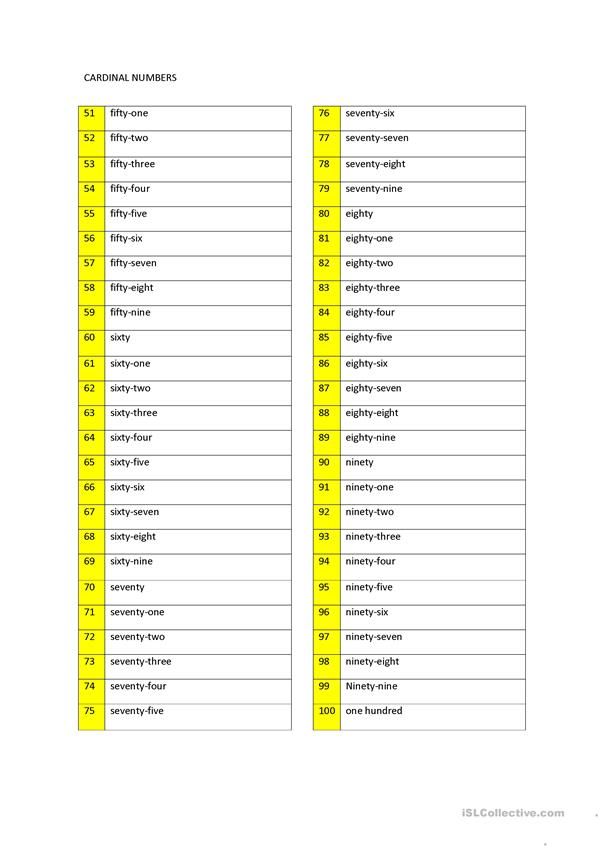
In writing, ordinal numbers can be reduced, there is no need to write so much:
- First - 1st
- Second-2nd
- Third - 3rd
- Fourth - 4th
- Fifth - 5th and so on
In the table - numerals of the English language. Save, Teach, Practice:
| Quantitative (cardinal) | Ordinal (ordinal) | |
| 1 | one | first |
| 2 | two | second |
| 3 | three | third |
| 4 | four | fourth |
| 5 | five | fifth |
| 6 | six | sixth |
| 7 | seven | seventh |
| 8 | eight | eighth |
| 9 | nine | ninth |
| 10 | ten | tenth |
| 11 | eleven | nine0673 eleventh|
| 12 | twelve | twelfth |
| 13 | thirteen | third |
| 14 | fourteen | fourteenth |
| 15 | fifteen | fifteenth |
| 16 | sixteen | sixteenth |
| 17 | seventeen | seventeenth |
| 18 | eighteen | eighteenth |
| 19 | nineteen | nineteenth |
| 20 | twenty | twentieth |
| 21 | twenty-one | twenty-first |
| 22 | twenty-two | twenty-second |
| 23 | twenty-three | twenty-third |
| 24 | twenty-four | twenty-fourth |
| 25 | twenty-five | twenty-fifth |
| 26 | twenty-six | twenty-sixth |
| 27 | twenty-seven | twenty-seventh |
| 28 | twenty-eight | twenty-eighth |
| 29 | twenty-nine | twenty-ninth |
| 30 | thirty | thirtieth |
| 40 | forty | fortieth |
| 50 | fifty | fiftieth |
| 60 | sixty | sixtieth |
| 70 | seventy | seventieth |
| 80 | eighty | eightieth |
| 90 | ninety | ninetieth |
| 100 | one hundred | hundredth |
| 200 | two hundred | two hundredth |
| 1000 | one thousand | thousandth |
| 1500 | one thousand five hundred | one thousand five hundred |
| 100,000 | one hundred thousand | hundred thousandth |
| 1,000,000 | one million | millionth |
English proficiency test
This English proficiency test was compiled by the Skysmart online school tutors. They prepared fun and relevant tasks on modern topics to make the test both useful and interesting
They prepared fun and relevant tasks on modern topics to make the test both useful and interesting
Cardinal numbers
Cardinal numbers - answer the question "how much" .
Remove should be no problem. There are no special chips and wisdom in their education - you just have to remember a few features.
Numerals hundred, thousand, million are used in the singular. No need to add the plural ending S.
The ending S is used only if the numerals are used as nouns:
- thousands of followers
- hundreds of voters - hundreds of voters
- dozens of comments
When writing a large number in English, you have to split it with commas, like this:
- 1.567 one thousand, five hundred and sixty-seven
By the way, in the UK it is customary to break long numbers with the union and:
- seven hundred and sixty - three
And in American English it is accepted like this:
- seven hundred sixty - three
Choose which English is closer to you and use one of the options.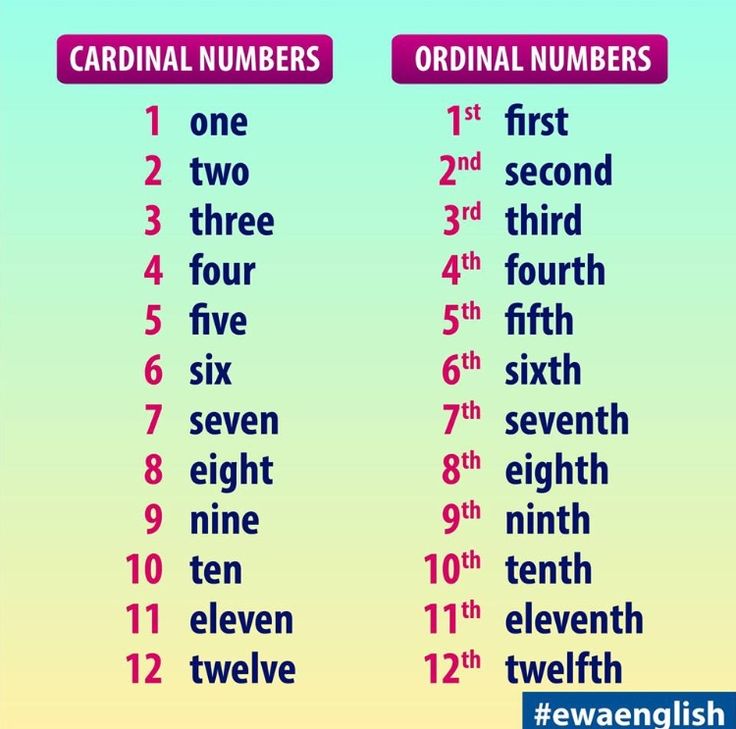
Cardinal numbers will surely be needed for you to dictate a phone number. Are people still exchanging numbers in 2020? Let's assume that yes and remember:
- the digits of the phone number are pronounced one at a time
- if two identical digits are in a row, you can say double and say the digit once
- 112 - 344 double one two three double four
Another effective way to quickly memorize numbers is to sign up for English lessons for children aged 8 online at Skysmart School.
How many English words do you already know?
Let's define your vocabulary - without complicated questions and with the help of smart algorithms.
Features of numerals
Everything could be simple and understandable with English numerals, if not for a few tricky rules that need to be understood and remembered. nine0021
Zero
Zero - he is zero, he is also zero, nil, nought and o - many-sided and mysterious, let's figure it out.
Zero is pronounced like zero:
- in the weather forecast: above zero - above zero, below zero - below zero, reduce to zero - reduce to zero.
- as a percentage: there is only a 30% chance of rain - the chance of rain is only 30%.
- in stable expressions: zero visibility - zero visibility, zero chance - zero chances. nine0626 in phone numbers it is equally acceptable to pronounce both zero and o [əu]
- in fractions: 0.6 - zero point six.
Zero is pronounced like o [əu]:
- for years and times: 2007 - twenty o seven.
- in phone numbers, bank accounts: 051 600 30 – o five one six double o three
- in fractions: 0.8 - o point eight.
For sports, matches, championships use Nil:
- we won four-nil - we won three-nil
- we drew nil-nil - we drew
British nought/naught means "zero", "nothing".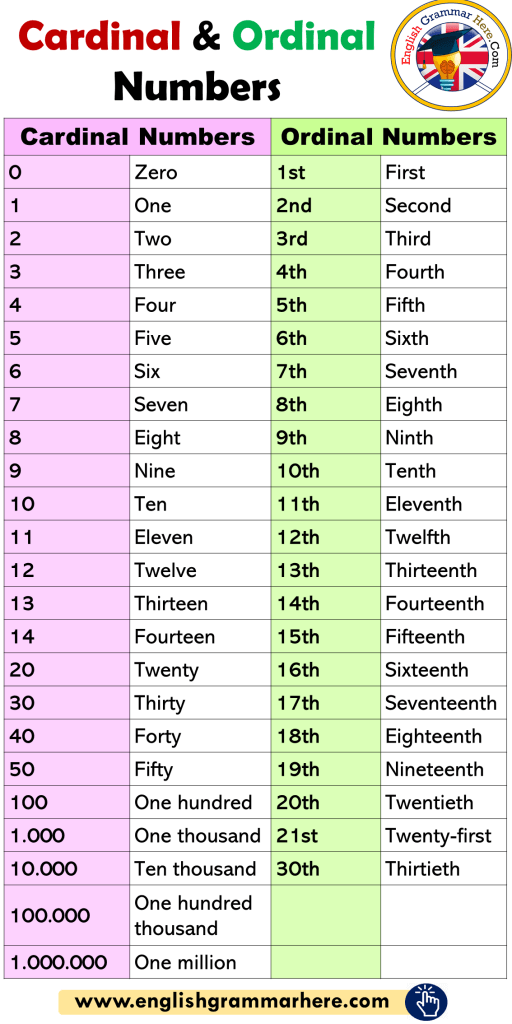 The word is outdated and almost never used, but it won't hurt to remember it. Suddenly, Elon Musk messes up something, and we fly into the past, not into the future.
The word is outdated and almost never used, but it won't hurt to remember it. Suddenly, Elon Musk messes up something, and we fly into the past, not into the future.
Year reckoning
Cardinal numbers are used to designate years in English.
- The four-digit year is divided in half and pronounced as two separate numbers: 1996 nineteen ninety-six,
-
Millenniums are pronounced in thousands:
2020 - two thousand twenty / twenty twenty,
22000 - two thousand,
22007 - two thousand and seven,
21907 - nineteen or seven,
-
If there are two zeros at the end of the year, then we pronounce with hundred, that is, we count hundreds:
1700 - seventeen hundred, 1900 - nineteen hundred.
Remember:
Preposition 9 is put before the year0614 in .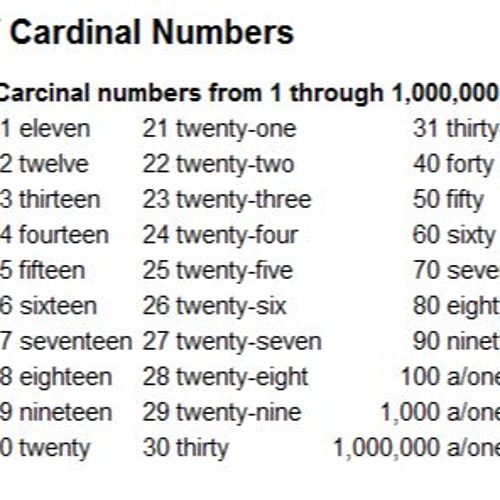
The word year is either completely omitted in the sentence, or stands before the numeral, contrary to any logic of a Russian-speaking person:
- Game of Thrones premiered in 2011
Also remember these designations, they are often found in books, textbooks and in movies:
- BC - before Christ (before Christ, - BC).
- AD - Anno Domini (after the birth of Christ, - our era). nine0004
Demo lesson in English
We will determine the level and set a goal, and then we will teach you to speak English fluently.
Fractions
Fractions - ½. The rules of writing are the same as in Russian. Recall that what is above the line is the numerator, and what is below it is the denominator.
Attention now:
-
The numerator is pronounced like a cardinal number.
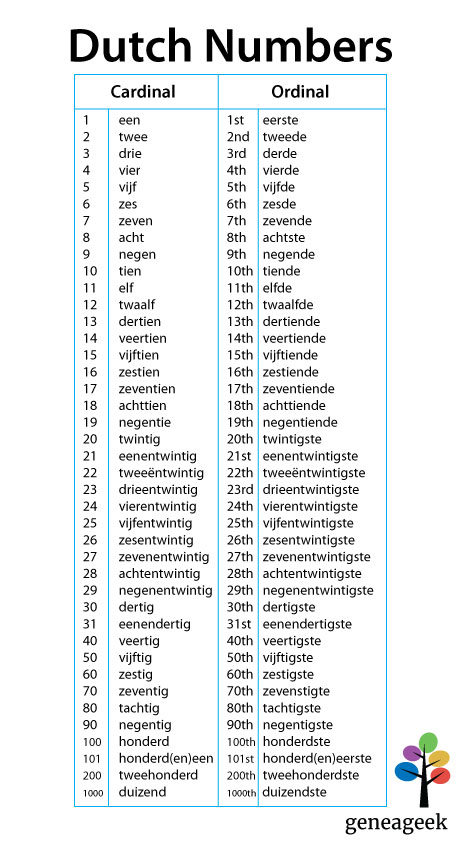
-
Denominator as an ordinal number.
-
The numerator one can be read as an article a :
-
1/14 - one fourteenth / a fourteenth
-
1/8 - one eighth / a eighth
-
1/3 - one third / a third
-
If the numerator is greater than 1, then the plural ending s is added to the ordinal denominator:
- 4/5 - four fifths
- 2/8-two eighths
- 1/2 - one half / a half
- 1/4 - one quarter / a quarter / one fourth
- 2/4 - two quarters
Remember:
When reading fractions, half is half
A quarter, one fourth
Decimals . There are a few things to remember here. In English decimal fractions, a dot is put, not a comma, and we do not pronounce fractions (tenths, hundredths, etc.). They are just called numbers. The point is also pronounced point:
There are a few things to remember here. In English decimal fractions, a dot is put, not a comma, and we do not pronounce fractions (tenths, hundredths, etc.). They are just called numbers. The point is also pronounced point:
- 2.26 two point twenty six
- 7.654 - seven point six five four
If there is no integer before the point, then zero is pronounced or nothing is said at all:
- 0.3 - zero point three / point three
- 0.65 - zero point six five / point six five
- 0.02 - zero point zero two / point zero two
You can also say o [əu] instead of zero.
Percentages in English do not require a plural. Percent is always singular:
- 3.3% - three point three percent
- 50% - fifty percent
- 99% - ninety-nine percent
Money
The currency designation always precedes the amount: $500 - $500, €200 - two hundred euros.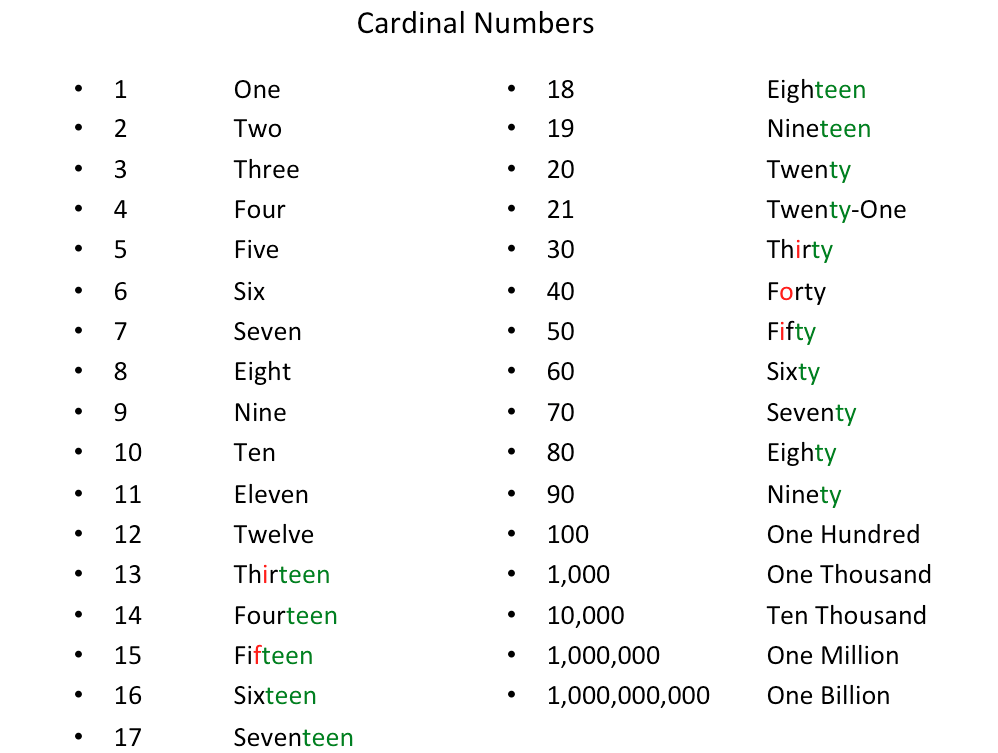 First, the amount is pronounced, and only then the name of the currency - do not mix it up.
First, the amount is pronounced, and only then the name of the currency - do not mix it up.
If the amount consists of a decimal fraction, then first we pronounce the whole number, then the currency, and at the end - the decimal part.
- € 16.55 - sixteen euros fifty five
- $20. 99 - twenty dollars ninety nine
If you know the name of the coin, you can insert it at the end.
Arithmetic operations
Cardinal numbers are used for counting in English.
to equal - equal to
- 2+2 = 4 - two plus two is four
- 10-5 = 5 - ten minus five equals five
- 30 x 3 = 90 - thirty multiplied by three is ninety
- 50 : 5 = 10 - fifty divided by five equals ten
The verb to be can be plural when added. And the verb to equal can be replaced by the verb to make.
- 36 + 6 = 42 - thirty six and six are forty two
- 8 + 4 = 12 - eight plus four make twelve
Let's practice
You already know how to read numbers in English. To remember all this better, try to practice a little.
1. Read aloud
- phone number: 125 - 344 - 09- 08, 566 - 321 - 007
- : 2003, 1984, 2012, 1400, 1901
- common fraction: 1/8; 1/2; 1/5; 2/3; 1/4; 2/4
- decimal: 2.39; 3.50; 1.70; 0.35; 0.08
- amount: €450, €60.88, €100, $78, $89, $35. 99
- example: 45 - 5 = 40, 2 x 10 = 20, 48 : 6 = 8, 78 + 8 = 86
2. Translate into English and read aloud (refer to the plate at the beginning of the article).
thirteenth, first, thirty-ninth, eighteenth, fifth, eighth, four hundred and thirty-fourth, one thousand one hundred and one, nine hundred fifty-third, eleventh, two million three hundred thousand and fourth.